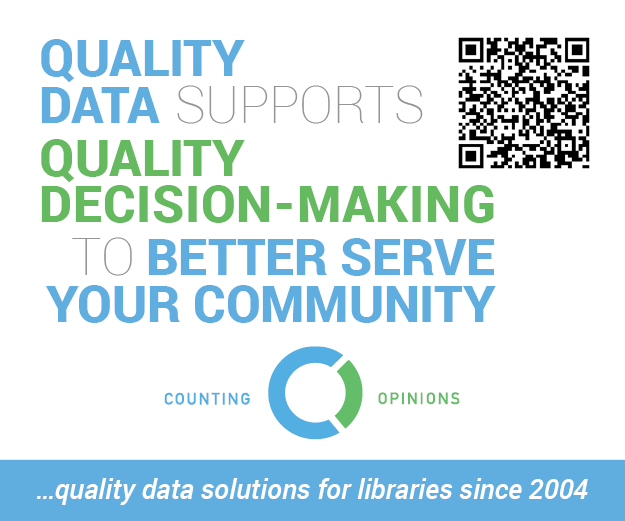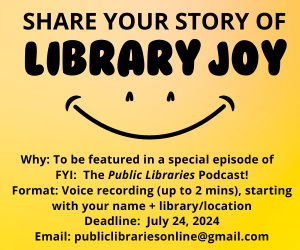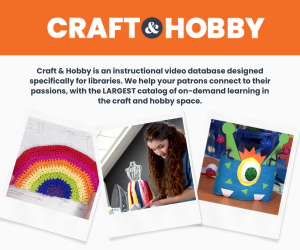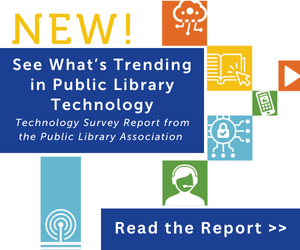“I Want There To Be Room For The Reader’s Imagination” – Laura Sims On Her Terrifying New Novel

Margo has found a fragile sense of solace working at a library, charming coworkers and patrons with her wicked sense of humor and strong work ethic. But Margo’s cheerful disposition masks a much darker past. Prior to the library, Margo worked under a different name as a nurse, shuffled from hospital to hospital due to the fact that her patients often met with untimely deaths. When Patricia, an aspiring novelist reeling after a recent career setback, takes a job as a reference librarian at the library, she’s drawn to the charismatic Margo. When Patricia gets a glimpse of Margo’s true persona in a rare unguarded moment, it sparks a deadly fascination between the two women that pulls them into increasingly dangerous territory. Laura Sims’ How Can I Help You is a searing thriller that combines keen psychological insight with mordant wit. Critics have widely praised the book, and it was recently named both a New York Times Book Review Best Thriller of the Year a Publishers Weekly Best Book of the Year. Laura Sims spoke with us about the novel’s real life inspiration, what she left out of her book, and her love of “weird, short novels.” Author photo courtesy of Jen Lee.
The book bounces back and forth between the perspectives of Margo and Patricia. I was wondering if one of them was the entry point to the book for you or did they both kind of arrive together?
Margo was definitely my entry point. I had heard this podcast episode about this woman named Jane Toppan, who was called “Jolly Jane.” She was this serial killer nurse from the 1800s in Massachusetts. Like Margot, she was very cheerful, efficient, and actually a really good nurse and very popular with patients and colleagues. But she was also injecting her patients with morphine and atropine, and then she would climb on top of them and watch them die in a state of ecstasy. I found her instantly fascinating and I made a note about her where I keep ideas for books. I had been wanting to write a female serial killer and when I looked at my file one day, I was like, “Oh right, I want to write about her.” So I used her as the model for Margo. Of course, she’s not exactly like her in many ways, but that was the starting point. I started writing in Margo’s voice and really enjoyed it. It wasn’t until I don’t know how many pages in that I realized, “Oh, I think she needs a foil or a weird friend to add texture to the story,” and that’s when Patricia came in.
How did you develop the voice for Margo? She seems to have almost an out-of-time quality in terms of the formality of how she speaks and some of her colloquialisms. Did that just spring fully formed or was it something that emerged over time?
Pretty much. I feel like this happened with [my first book] Looker too where I had the first lines of the book and that voice came to me pretty easily. Then it was just a matter of continuing it. Maybe she has that quality because she is based on this woman from the 1800s? She’s sort of old fashioned in weird ways. I don’t know, it just kind of came out. (laughs)
You really pull the reader into the darkness of Margo’s psyche. It feels like you must have done a lot of research to step into someone who would make the choices that Margo does.
I mean, I really didn’t! (laughs) I don’t love doing really conscious research when I’m working on fiction. I’ve read a lot about serial killers through the years, because they’ve always fascinated me, particularly women who are serial killers or who are Munchausen by proxy. Women who kill really interest me in the in the way that they overturn the societal expectations of women in this really violent way. I find that really fascinating, so I’ve read a lot through the years about women like that. I did ultimately read a book about Jane, there’s one biography called Fatal by Harold Schecter. I didn’t really do concentrated research to get into her head. It was quite easy for me, whatever that says. (laughs)
One thing I really loved about the book is how you don’t really spell everything out for the reader. We get glimpses of Margo’s past but it’s never black and white about what specifically happened. Can you talk about what you included versus what you omitted in the book?
I love to talk about this, because what you loved in the book is what really annoys a lot of readers. I think there are some readers who want everything spelled out and want there to be a reason for her behavior. Listen, that was a lot of background for me. (laughs) I do not like giving the kind of background for my characters that’s like, “Oh, she had this happen to her so she’s this way.” I find it too easy. I don’t think humans are that easily understandable. Of course I think Margo is a psychopath and yes, she maybe had a difficult childhood with an alcoholic mother. But I don’t want to put so much in that you’re able to say this was why she did this. I wanted her to be kind of a pure psychopath. This is going to sound really weird, but I don’t think that women psychopaths or women killers are given the freedom to just be who they are and do what they do without some kind of motive ascribed to them. Like, “Oh, they did it because their husband left them or they wanted revenge or they wanted money or whatever.” I just wanted to let her be pure in this very creepy way. I think it’s scarier that way too, or less comforting, right?
I think coming from poetry the way I do is also part of it. That’s how I write. I think of it more as a collaboration between the reader and the writer, so I don’t love giving people everything. I want there to be room for the reader’s imagination because that’s part of the fun of reading, for me anyway.
I want to ask you about that as like your background as a poet. How does that inform your approach to fiction?
I’m still motivated by the same things that I was in writing poetry: voice, imagery, feeling, emotion. I’m not a natural when it comes to plot or setting, those are things I really have to work on when I’m writing fiction. I have to have to really consciously layer them in. But I still come from this place of I get an idea or I hear a voice or a line and it motivates me and inspires me to write. In those ways, it’s very similar to writing poetry for me. Of course, it’s very different because it’s so long and such a slog and things like plot stuff has to happen, you have to have a setting to some extent. (laughs) I always have pretty minimal settings, so that’s different. Also, I pay a lot of attention to language. Not in the way that most people think of the poet-novelist, right? Because I don’t write flowery prose. I don’t think I write in the super lyrical mode. In my fiction, I’m pretty spare, which I also was in my poetry. But I do pay a lot of attention to the sound of the line and the rhythm and how it sounds when you read it out loud, so I’m still doing stuff like that.
I’m surprised to hear you say that about setting, because this book has such a strong sense of place, both in terms of the library and also the apartment complex where Margo and Patricia live. Was that something that was in the original draft or was that something you layered in subsequently?
The library was like a gift to me. Part of the inspiration for the book was the setting of the library. In that way, I didn’t have to work that hard for a main setting because one of the main focuses of the book was the library. I don’t like writing setting. It’s more I can focus on a small specific. I like really contained settings for my novels and then I can really dig into them. I don’t think I’m the type of writer who could do like a big sweeping novel that takes you from one country to the next or something. Maybe someday, who knows? (laughs) I really like contained and specific settings and the library is so perfect for that.
You work as a reference librarian, and I think what will be fun for people who either love the library or who work in libraries is to see how the library is portrayed. You capture a grittier side of a small town library and also the mundanity of any kind of public facing job.
I work part time at my local library, but I had started working more frequently during the pandemic. People were not feeling comfortable enough to return to work, so that was when I really started to get to know patrons and have more interactions with people. I started to keep a notebook much like Patricia does, although mine was I would jot down notes when I had interesting conversations either on the phone or in person. I started to think—and this is also like Patricia—I was really surprised by the difference between what the focus had been on in graduate school in preparing us for library work, of course really essential things like planning programs, discussing equity issues. But we didn’t spend a lot of time on what will it actually be like to work at a public library day to day And some of the issues that librarians are focusing on now. I was really struck by the difference between my idea of what a reference librarian would be doing all day and the reality of answering those calls, like Patricia gets, like what’s the weather in Saudi Arabia today, or what time is my favorite TV show on? I wanted to capture that. I also feel like there aren’t many shows or movies or books that show the library in that way. There are a lot of romanticized versions that we see or read. I kind of wanted to just blow those up. (laughs)
The book moves so quickly, and it seems like a book you read very fast because you want to know what’s going to happen next. How did you arrive at the pacing of the story?
I tend to overwrite when I’m first draft-ing. In revision I definitely had to hone the pacing and figure out how to balance it. I kind of like that it has an irregular pacing to it. People have called it a slow burn, either in a positive way or a negative way. (laughs) I am a fan of the slow burn. I think the first couple of sections of the book are probably slower, but it hopefully builds to this really rapid movement towards the end. I wanted that feeling of things moving steadily, slowly increasing, and then the dominoes fall and everything happens fast. I like capturing that kind of pacing, which I do think happens in life. When things go badly, things fall apart very quickly.
The book is so compact at 240 pages. Is that a scope that you enjoy working in?
I love weird short novels. That’s like my favorite thing to read. Probably I have absorbed that into my own writing, and then replicated it. It probably also comes from that transition from poetry to fiction. This book is a little bit longer than Looker was, and the book I’m working on now is a little bit longer than How Can I Help You I’m gradually getting a bit longer, but they’ll probably still be relatively short. I don’t really think that many books need to be anywhere over 300 pages. I love a long book that needs to be long—and there are some—but there are so many more that I’ve read that I just want to take a red pencil to. I don’t know if I should say that. (laughs)
I like the idea of there being a table in a bookstore or library with a sign, “Weird, Short Novels.”
Wouldn’t that be great? I would go right to it. Oh my gosh, I just love them. I love like the tightness of them. I just feel when you are putting that much energy into this compact little form, everything is spot on.
The book is also really funny. The supporting characters are so sharply drawn and so fun whenever they appear. This is a very dark story with a lot of really grim things that you handle respectfully, but the book the book has a definite humorous streak, and I’m curious about how you arrived at the tone.
I feel like it grew naturally out of Margo herself, and how she is this cheerful, jolly person, this person with many contradictions to her, and she has a great sense of humor. It kind of came out of itself, coming from her especially, not so much Patricia. I love dark comedy. I love the kind of sharp observations that can come from that darkly comic tone. Those are really appealing to me.
A lot of critics have compared this book to Shirley Jackson, plus We Have Always Lived In The Castle plays such a huge part, where Patricia and Margo have such a specific relationship with that book. I was curious about the authors who are meaningful for you, either growing up or as a writer?
Definitely Shirley Jackson. She’s definitely very inspiring to me. While I was writing the book, I was having a hard time finding a book that I loved. I picked up We Have Always Lived In The Castle to read it again and I just adored it for the second time. I thought it would be fun to stick it in the book and have this nurse serial killer who doesn’t read fall in love with it. Patricia Highsmith is a big influence. I love the oddness of her story lines, just the psychological depth of her stories. I’ve always been amazed by her.
Finally, what role has the library played in your life?
I’m kind of a cliché. As a young reader and writer, I spent a lot of time at the library. I remember my divorced dad would take me. He didn’t quite know what to do with me when he had me on Saturdays, so we would go to the library for hours. I already loved to read but I think it really emphasized and increased my love of books and reading. I would just sit down there and read books and talk to the librarian. It was always a very safe, wonderful, comforting place for me. It was a huge influence on my reading and writing life from very early times.
This interview has been edited and condensed.
Tags: Laura Sims












